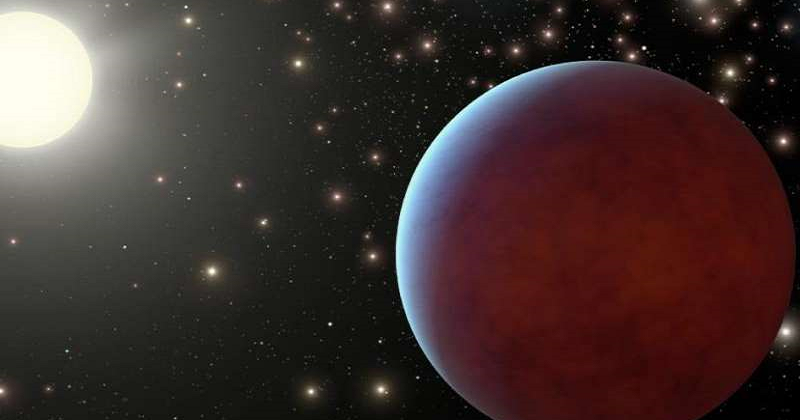
Astronomers Discover Four New Giant Exoplanets Bigger Than Our Sun
Four new giant exo-planets – with masses bigger than our sun and orbital periods that eclipse the Earth’s were discovered by the astronomers, which may help them in their continued search for alien worlds. The newly detected world’s are enormous, with masses from 2.4 to 5.5 the mass of Jupiter and have very long orbital periods ranging from nearly two to slightly more than four Earth years.

The team, led by Matias Jones of the Pontifical Catholic University of Chile, made the discovery using observations gained from EXPRESS (EXoPlanets aRound Evolved StarS) radial velocity program, which took advantage of two Chilean telescopes in the Atacama desert and one Anglo-Australian telescope in Australia.
During the observation of 166 bright giant stars using spectrographs, the team computed the velocities of four giant stars: HIP8541, HIP74890, HIP84056 and HIP95124. After observing the periodic signal variations in these velocities, the team came to the conclusion that the stars were in the presence of planetary objects.
HIP8541b is the most massive of the newly found planets. With a mass of about 5.5 Jupiter masses, this exoplanet also has a much longer orbital period than the other three worlds, equal to 1,560 days. Its parent star is slightly more massive than the Sun and has a radius of nearly eight solar radii.
HIP74890b and HIP84056b are very similar in terms of mass and orbital period. The mass of HIP74890b is estimated to be 2.4 Jupiter masses. HIP84056b has an orbital period lasting nearly 819 days — about three fewer days than the other planet. Their host stars are also of similar mass and size, about 1.7 the mass of the Sun, with a radius of 5.03 (HIP84056) and 5.77 (HIP74890) solar radii.
Among the exoplanets, HIP95124b has the shortest orbital period of 562 days. It has a mass of 2.9 Jupiter masses and orbits a star nearly two times more massive than the Sun, with a radius of 5.12 solar radii.
In addition to revealing four new exoplanets, the new discoveries also yielded interesting results regarding the correlations between stellar properties and the occurrence rate of planets, revealing that giant planets tend to be found near metal-rich stars.
This finding confirms the trend of metal-rich stars being more likely to host planets and could help in future studies that aim to discover new alien worlds. The findings were published in the journal arXiv.org on March 11.